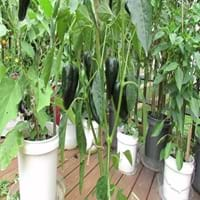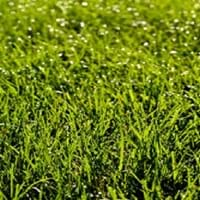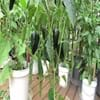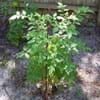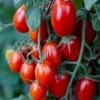Life Span
Perennial
Perennial
Origin
Mexico, Central America, South America
Southern Asia, India
Types
Pasilla Bajo Pepper, Ancho Magnifico pepper
Not Available
Habitat
Fertile bottom land
Warmer regions
USDA Hardiness Zone
4-12
6-11
Sunset Zone
A1, A2, A3, H1, H2, 1a, 1b, 2a, 2b, 3a, 3b, 4, 5, 6, 7, 8, 9, 10, 11, 12, 13, 14, 15, 16, 17, 18, 19, 20, 21, 22, 23, 24
H1, H2, 5, 6, 7, 8, 9, 10, 12, 13, 14, 15, 16, 17, 18, 19, 20, 21, 22, 23, 24
Habit
Upright/Erect
Mat-forming
Flower Color
Yellow, Gold
Not Available
Flower Color Modifier
Bicolor
Bicolor
Fruit Color
Yellow, Orange
Not Available
Leaf Color in Spring
Dark Green
Gray Green, Dark Green
Leaf Color in Summer
Purple, Gray Green
Light Green
Leaf Color in Fall
No
Gray Green, Dark Green
Leaf Color in Winter
Green, Dark Green
Gray Green, Dark Green, Tan
Leaf Shape
Oval
Arrowhead
Plant Season
Not Available
Spring, Summer, Fall, Winter
Sunlight
Full Sun
Full Sun
Type of Soil
Loam
Clay, Loam, Sand
The pH of Soil
Acidic, Neutral
Acidic, Neutral, Alkaline
Soil Drainage
Well drained
Well drained
Bloom Time
Not Available
Indeterminate
Tolerances
Drought
Pollution, Salt, Soil Compaction
Where to Plant?
Container, Ground, Pot
Container, Ground
How to Plant?
Seedlings
Seedlings
Plant Maintenance
Medium
Medium
Watering Requirements
Average Water Needs, Do Not over Water, Requires regular watering
Average Water Needs
In Summer
Average Water
Lots of watering
In Spring
Moderate
Moderate
In Winter
Average Water
Average Water
Soil pH
Acidic, Neutral
Acidic, Neutral, Alkaline
Soil Type
Loam
Clay, Loam, Sand
Soil Drainage Capacity
Well drained
Well drained
Sun Exposure
Full Sun
Full Sun
Pruning
Remove damaged leaves, Remove dead branches, Remove dead leaves, Remove dead or diseased plant parts, Remove deadheads
No pruning needed
Fertilizers
All-Purpose Liquid Fertilizer
Apply 3-1-2 or 4-1-2 ratio, Nitrogen
Pests and Diseases
Red blotch
Red blotch
Plant Tolerance
Drought
Pollution, Salt, Soil Compaction
Flowers
Insignificant
Insignificant
Flower Petal Number
Single
Single
Foliage Texture
Medium
Fine
Foliage Sheen
Glossy
Matte
Attracts
Insects
Flying insects, Insects
Allergy
Skin irritation
breathing problems, Eye irritation, Hives, Itchiness, Runny nose, sneezing, Throat itching, Whooping Cough
Aesthetic Uses
Not Used For Aesthetic Purpose
Ground Cover, Landscape Designing
Beauty Benefits
Not Available
Skin irritation, Skin Problems
Edible Uses
Yes
Insignificant
Environmental Uses
Air purification
Air purification, Prevent Soil Erosion, soil stabilisation
Medicinal Uses
Anti-oxidant, Cold, Improve circulation, Swelling, Upset stomach, Weight loss
Cures constipation, Cures foot fissures, Digestive disorders, Eliminate toxins, Fatigue, Halitosis, Improves Breast milk production, Increase red blood cells, Insomnia
Part of Plant Used
Fruits
Leaves, Stem
Other Uses
Used As Food
Animal Feed, Cattle Fodder, Used as Ornamental plant
Used As Indoor Plant
Yes
Insignificant
Used As Outdoor Plant
Yes
Yes
Garden Design
Container, Edible, Herb / Vegetable, Mixed Border, Tropical
Lawns and Turf
Botanical Name
CAPSICUM annuum 'Guajillo'
CYNODON dactylon
Common Name
Chile Negro, Holy Mole Chile, Poblano Pepper
Bermuda Grass
In Hindi
Poblano pepper plant
बरमूडा घास
In German
Poblano Pfefferpflanze
Bermuda Gras
In French
Poblano Pepper usine
l'herbe des Bermudes
In Spanish
planta de pimiento poblano
Grama
In Greek
φυτό πιπέρι poblano
Αγριάδα
In Portuguese
Poblano planta da pimenta
grama Bermuda
In Polish
Poblano papryka roślin
Trawa Bermuda
In Latin
Poblano piperis herba
Bermuda Grass
Phylum
Magnoliophyta
Magnoliophyta
Class
Magnoliopsida
Liliopsida
Order
Solanales
Cyperales
Family
Solanaceae
Poaceae
Genus
Capsicum
Cynodon Rich
Clade
Angiosperms, Asterids, Eudicots
Angiosperms, Commelinids
Tribe
Capsiceae
Chlorideae
Subfamily
Solanoideae
Chloridoideae
Importance of Poblano Pepper and Bermuda Grass
Want to have the most appropriate plant for your garden? You might want to know the importance of Poblano Pepper and Bermuda Grass. Basically, these two plants vary in many aspects. Compare Poblano Pepper and Bermuda Grass as they differ in many characteristics such as their life, care, benefits, facts, etc. Every gardener must at least have the slightest clue about the plants he wants to plant in his garden. Compare their benefits, which differ in many ways like facts and uses. The medicinal use of Poblano Pepper is Anti-oxidant, Cold, Improve circulation, Swelling, Upset stomach and Weight loss whereas of Bermuda Grass is Cures constipation, Cures foot fissures, Digestive disorders, Eliminate toxins, Fatigue, Halitosis, Improves Breast milk production, Increase red blood cells and Insomnia. Poblano Pepper has beauty benefits as follows: Not Available while Bermuda Grass has beauty benefits as follows: Not Available.
Compare Facts of Poblano Pepper vs Bermuda Grass
How to choose the best garden plant for your garden depending upon its facts? Here garden plant comparison will help you to solve this query. Compare the facts of Poblano Pepper vs Bermuda Grass and know which one to choose. As garden plants have benefits and other uses, allergy is also a major drawback of plants for some people. Allergic reactions of Poblano Pepper are Skin irritation whereas of Bermuda Grass have breathing problems, Eye irritation, Hives, Itchiness, Runny nose, sneezing, Throat itching and Whooping Cough respectively. Having a fruit bearing plant in your garden can be a plus point of your garden. Poblano Pepper has showy fruits and Bermuda Grass has no showy fruits. Also Poblano Pepper is not flowering and Bermuda Grass is not flowering . You can compare Poblano Pepper and Bermuda Grass facts and facts of other plants too.
